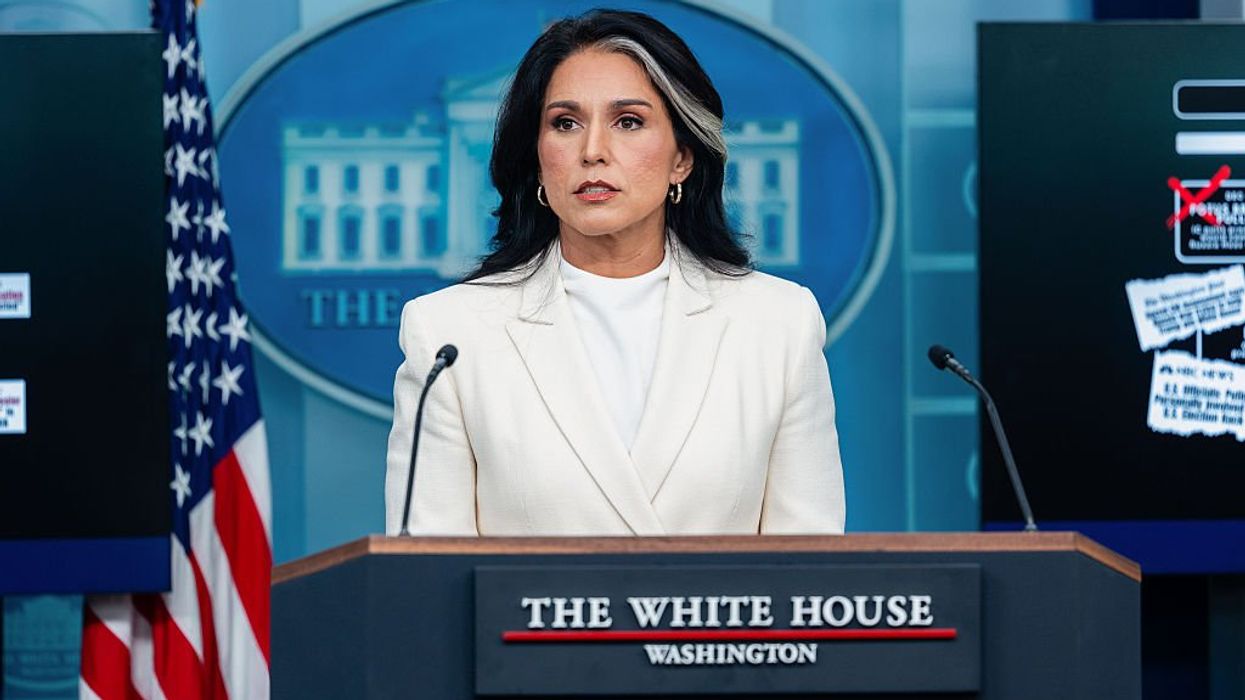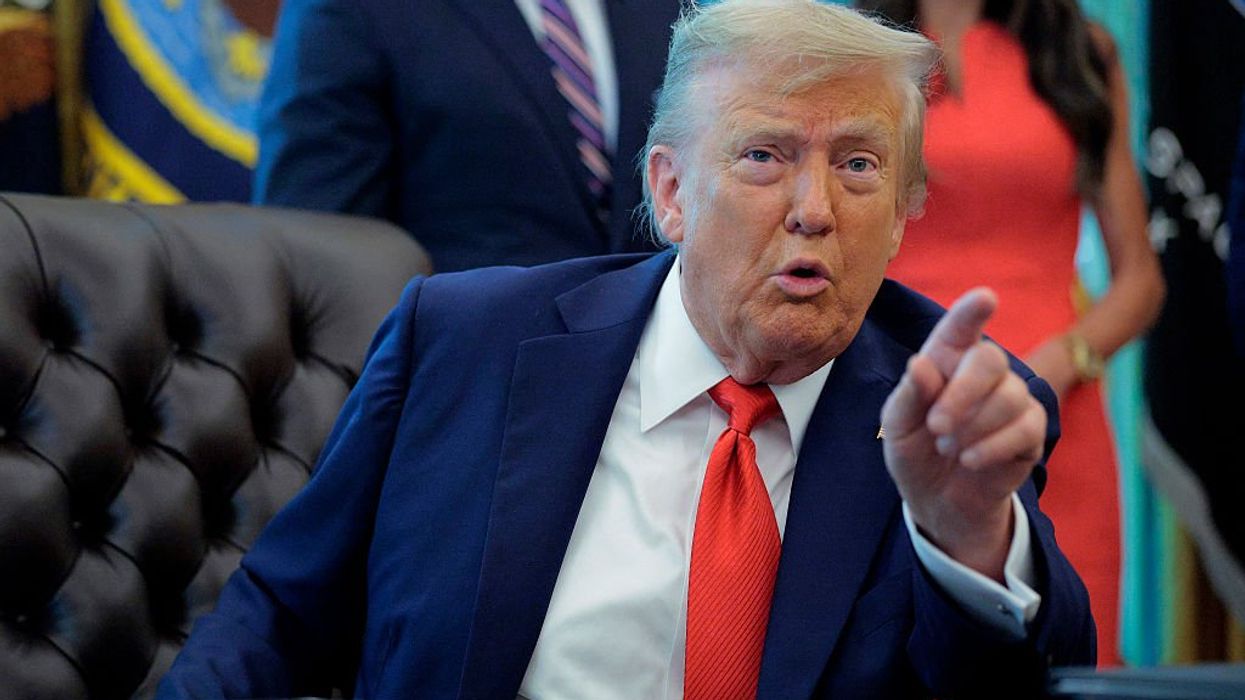On Friday, the Wall Street Journal published a letter from billionaire venture capitalist Tom Perkins in which he compares the progressive war on the one percent in America today to Nazi Germany’s singling out of Jews in the 1930s. Perkins’ comments have gained so much attention, the venture capital firm he founded has actually denounced his remarks. But on radio this morning, Glenn explained why he agrees with Perkins' sentiment.
“There is an op-ed in the Wall Street Journal that came out over the weekend that every American should see,” Glenn said on radio this morning. “I think Tom is right… He is a hero. He is a hero. Somebody needs to say it. It is the same seed.”
The letter, titled “Progressive Kristallnacht Coming?” reads:
Regarding your editorial "Censors on Campus" (Jan. 18): Writing from the epicenter of progressive thought, San Francisco, I would call attention to the parallels of fascist Nazi Germany to its war on its "one percent," namely its Jews, to the progressive war on the American one percent, namely the "rich."
From the Occupy movement to the demonization of the rich embedded in virtually every word of our local newspaper, the San Francisco Chronicle, I perceive a rising tide of hatred of the successful one percent. There is outraged public reaction to the Google buses carrying technology workers from the city to the peninsula high-tech companies which employ them. We have outrage over the rising real-estate prices which these "techno geeks" can pay. We have, for example, libelous and cruel attacks in the Chronicle on our number-one celebrity, the author Danielle Steel, alleging that she is a "snob" despite the millions she has spent on our city's homeless and mentally ill over the past decades.
This is a very dangerous drift in our American thinking. Kristallnacht was unthinkable in 1930; is its descendent "progressive" radicalism unthinkable now?
Tom Perkins
San Francisco
Mr. Perkins is a founder of Kleiner Perkins Caufield & Byers.
After the letter was met with ire on various social media platforms, Kleiner Perkins tweeted: ”Tom Perkins has not been involved in KPCB in years. We were shocked by his views expressed today in the WSJ and do not agree.”
Glenn found himself agreeing with Perkins assertion that that ‘truth’ is often difficult to see in the moment, but history ends up telling a very different story. In fact, Glenn did a lesson with his Sunday school class that centered on universal truths and how those truths can be distorted.
When did human beings first realize the earth was round?
Two of the teenagers in Glenn’s class were able to answer that question correctly. It was the ancient Egyptians that first discovered the earth’s circumference, and yet the maps were never updated with that information. Why? Because it didn’t fit the narrative.
“Now, how is it we didn't know that the world is round? How is it that the maps never changed? How is it that in 1492, they were actually saying we could fall off the edge of the earth? Because it didn't fit the narrative of those who were in power,” Glenn said. “So how do you lose truth? Truth is discovered and rediscovered over and over and over and over again… There are three factors I think that makes truths disappear.”
Glenn believes those three factors are fear, ignorance, and greed. And he outlined the danger of each:
1. Force and fear
“How is [truth] lost… One, force and fear. Use force. I will take you and shut you up and lock you in the tower. You can ask anyone from Galileo to Tyndale,” Glenn said. “The king says, the power says: Be quiet or fear… It doesn't have to be the government. It can to be any mob-like mentality that has force over you, can put pressure on you. Step one: Force and fear. That's the way you lose it. “
2. Ignorance and apathy
“We talked about this last week. The National Crimes… Why are they national crimes? They're national crimes because you turn the other way; you stop looking at the truth,” Glenn said. “Kristallnacht was absolutely horrific. Would have never been considered in 1930. But nobody warned… because there were thugs up at the top. They shut people up…
Don't you see? Ignorance, apathy. I don't know. I don't care. National crimes.”
3. Greed and envy
“The first part of this is greed… Greed is not necessarily bad unless it makes you do things that are immoral. Wanting to have more, wanting to be more… that's not bad. But if it makes you do whatever you have to do, even those things are illegal or immoral, then it becomes bad,” Glenn explained. “Then you couple greed with envy because that's the other side of the greed coin. If everybody else is greedy… then envy sets in. Well, they have it and I don't. How come I don't have it? I should take it from them. And then the whole thing burns down.
So how do you avoid the trap of having to consistently rediscover the universal truths? You must ensure you have an engaged and educated population.
“If they don't want it, they won't do it. If they want it, they'll do it,” Glenn said. “When I first started educating myself, I could afford one class at a university. That's all I needed. And then I started using the library. Then I went to the bookstore – when bookstores actually had books in them. And I educated myself. I'm a self-educated man. A lot of people will look down on that. So be it. I'm proud of it.”
“You have everything you need,” he concluded. “We win. Man does not lose those self-evident truths. The moment… people understand they have all they need… we win.”

 Kean Collection / Staff | Getty Images
Kean Collection / Staff | Getty Images
 Bloomberg / Contributor | Getty Images
Bloomberg / Contributor | Getty Images Chip Somodevilla / Staff | Getty Images
Chip Somodevilla / Staff | Getty Images